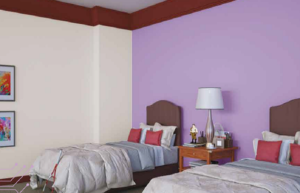Arizona’s unique climate presents a variety of challenges for homeowners who want to maintain a lush, green lawn. With scorching summers, limited rainfall, and a growing emphasis on water conservation, traditional lawns can be difficult and costly to maintain. That’s where artificial grass comes in, offering a smart landscaping solution that’s both environmentally friendly and aesthetically pleasing. In this article, we’ll explore the role of artificial grass in modern landscaping, especially in areas like Phoenix, and discuss why it might be the best choice for your yard.
The Arizona Climate Challenge
Arizona is known for its hot, dry climate, particularly in cities like Phoenix, where summer temperatures regularly exceed 100°F. These harsh conditions make it difficult to grow and maintain natural grass, which requires substantial amounts of water and care. As a result, many homeowners and businesses are turning to artificial grass in Arizona as a practical and sustainable alternative.
What Makes Artificial Grass a Smart Choice?
- Water Conservation One of the most significant benefits of residential artificial turf is its ability to conserve water. Natural grass lawns require consistent watering to stay green, especially in the arid environment of Arizona. With water scarcity becoming an increasingly critical issue in the region, reducing water usage is more important than ever. Artificial grass eliminates the need for watering altogether, allowing you to maintain a vibrant lawn year-round without contributing to water waste.
- Low Maintenance Maintaining a natural grass lawn in Phoenix can be both time-consuming and expensive. From regular mowing and fertilizing to pest control and irrigation, keeping a lawn in top condition requires a significant investment of both time and money. Artificial grass, on the other hand, requires minimal upkeep. Occasional brushing and rinsing are usually all that’s needed to keep it looking fresh and clean, freeing up your time and reducing maintenance costs.
- Durability and LongevityArtificial grass in Phoenix is designed to withstand the harsh conditions of the desert climate. Unlike natural grass, which can wither and die in extreme heat, artificial turf is made from durable materials that can endure high temperatures, heavy foot traffic, and even UV exposure. This durability ensures that your lawn will stay green and attractive for many years, making it a wise long-term investment.
- Aesthetic Appeal When people think of artificial grass, they often picture a fake-looking, plastic lawn. However, modern artificial grass has come a long way in terms of appearance and texture. Today’s artificial turf is designed to closely mimic the look and feel of real grass, with a variety of styles and colors available to suit different tastes and landscaping needs. Whether you’re looking for the best grass for Phoenix or simply want to enhance your yard’s curb appeal, artificial grass offers a lush, green appearance that rivals natural lawns.
Why Artificial Grass is Ideal for Phoenix
Given the unique challenges posed by Phoenix’s climate, artificial grass is increasingly becoming the go-to solution for homeowners and businesses alike. Here are some specific reasons why artificial grass in Phoenix is such a popular choice:
- Year-Round Greenery In a city where summer temperatures can reach well over 110°F, keeping natural grass alive and healthy is a daunting task. Artificial grass, however, remains green and lush regardless of the weather. This means you can enjoy a beautiful lawn throughout the year, without worrying about seasonal changes or drought conditions.
- Pet-Friendly Landscaping Artificial turf is also an excellent option for pet owners. It provides a clean, safe surface for pets to play on, without the mud, pests, and allergens commonly associated with natural grass. Additionally, artificial grass is easy to clean and resistant to stains and odors, making it a practical choice for pet-friendly homes.
- Environmental Benefits By choosing residential artificial turf, you’re not just saving water – you’re also reducing your carbon footprint. Traditional lawns often require the use of lawnmowers, fertilizers, and pesticides, all of which can have a negative impact on the environment. Artificial grass eliminates the need for these resources, contributing to a cleaner, greener planet.
Selecting the Best Grass for Phoenix
When it comes to choosing the best grass for Phoenix, not all artificial turf is created equal. There are several factors to consider to ensure you get the right product for your specific needs:
- Quality of Materials Look for high-quality materials that are designed to withstand Arizona’s extreme weather conditions. UV resistance, durability, and realistic texture are key features to consider when selecting artificial grass.
- Infill Options The type of infill used in your artificial turf can affect its feel, performance, and longevity. Different infill materials offer varying levels of cushioning, drainage, and temperature control, so it’s important to choose the right one for your application.
- Installation Expertise Proper installation is crucial to ensuring the long-term performance of your artificial grass. Work with experienced professionals who understand the unique challenges of installing artificial turf in Phoenix, and who can provide a seamless, high-quality installation.
Conclusion
Artificial grass offers a smart, sustainable landscaping solution for Arizona residents who want to enjoy a lush, green lawn without the hassle and expense of maintaining natural grass. Whether you’re looking to enhance your home’s curb appeal or create a durable, pet-friendly outdoor space, artificial grass in Phoenix is a practical and attractive choice. By selecting high-quality materials, considering your specific needs, and working with experienced installers, you can create a beautiful, low-maintenance landscape that will thrive in Arizona’s challenging climate.




